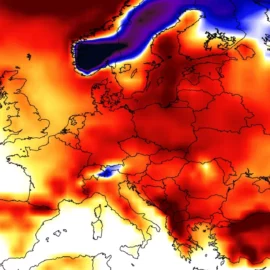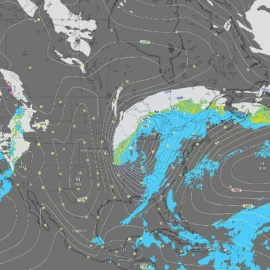
Preparing for the Winter Ahead: Shocking Predictions for the Winter of 2024-2025
As the leaves begin to change and the air grows crisp, our thoughts inevitably turn to the upcoming winter season. While weather patterns can be notoriously difficult to predict, a recent article from Severe Weather EU has shed some light on the potential conditions we might face in the winter of 2024-2025. By analyzing a few key indicators, we can gain a better understanding of what to expect in the months ahead.
The first sign that points to a colder winter is the current state of the El Niño-Southern Oscillation (ENSO) cycle. According to the article, the ENSO is currently in a neutral phase, which means neither El Niño nor La Niña conditions are present. However, the article suggests that there are signs that the ENSO could transition into a La Niña phase in the coming months. This is significant because La Niña events are often associated with colder-than-average temperatures in certain regions, including parts of the United States, Canada, and Europe.
Another factor that could contribute to a colder winter is the behavior of the Arctic Oscillation (AO). The AO is a measure of the atmospheric pressure difference between the Arctic and the mid-latitudes, and it can have a significant impact on winter weather patterns. The article notes that the AO has been in a negative phase in recent years, which has been linked to increased chances of cold air outbreaks and snowstorms in parts of North America and Europe. While the long-term behavior of the AO is difficult to predict, the article suggests that there are indications it could remain in a negative phase during the 2024-2025 winter season.
Finally, the article points to the potential influence of solar activity on the upcoming winter. It notes that the Sun's activity tends to follow an 11-year cycle, and that the next solar minimum is expected to occur around 2024-2025. During solar minimum periods, the Sun's magnetic field weakens, which can lead to changes in the Earth's atmosphere and potentially contribute to colder winter conditions in some regions.
Of course, it's important to remember that long-range weather forecasting is an inexact science, and there are many factors that can influence the severity of a winter season. However, by analyzing these key indicators, we can gain a better understanding of the potential weather patterns that may unfold in the coming years.
For those living in areas that are prone to harsh winters, it's never too early to start preparing. This could involve stocking up on winter supplies, ensuring your home is well-insulated, and developing a plan for dealing with potential power outages or other weather-related disruptions. By being proactive and staying informed, we can better navigate the challenges that the 2024-2025 winter season may bring.
As we look ahead to the colder months, it's important to remember that weather patterns can be unpredictable and that the long-range forecast is subject to change. However, the insights provided by the Severe Weather EU article offer a useful starting point for understanding the potential conditions we might face in the coming years. By staying informed and taking the necessary precautions, we can ensure that we are well-equipped to handle whatever Mother Nature has in store.
Founder and chief forecaster of the Pogodnik service. He has many years of experience in the meteorological service. He is the author of numerous scientific publications and popular articles about the weather.




